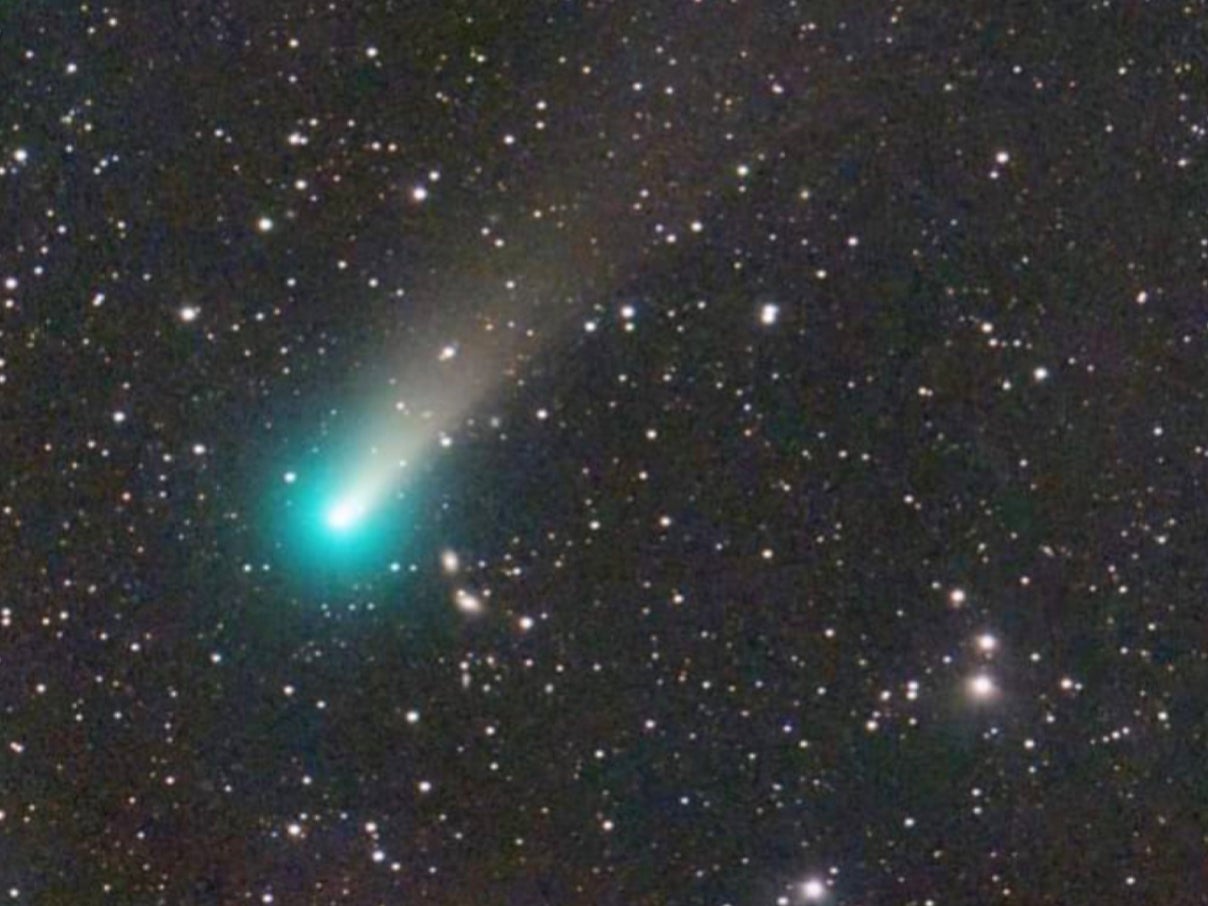Astonishing bright green Comet Leonard is visible to the naked eye
It is the first time the comet will pass Earth in 70,000 years

Comet Leonard, an astonishing bright green streak across the sky, will be visible to the naked eye this weekend.
The streaking rock was first detected at the start of this year, and will be passing Earth for the first time in 70,000 years - albeit at a distance of 21.7 million miles away.
“This is a bright-ish comet that we see in the skies on average once per year. As it gets a little closer, it could become visible to the naked eye, making for some attractive pictures”, Marco Micheli, Astronomer in ESA’s Near-Earth Object Coordination Centre, said.
The comet will be most visible on 12 December but will disappear as it reaches closer post that date, due to its proximity to the Sun. It will reach its closest to the sun - the perihelion - on 3 January.
It will skim through a number of constellations over just a few days, but on 12 December it will be moving past Venus and Mercury before passing by Saturn and Jupiter later. Most people will want to use binoculars or a telescope to get the best view.
Leonard does not pose a threat to Earth, with Mr Micheli saying that “thankfully [it is] rather unspectacular”, but does not mean it is not exhibiting some unusual behaviour.
It is expected that comets would get brighter as they approach the Sun, and Leonard is – but only because it is becoming closer to the Earth, not because it is getting brighter inherently.
"It’s not great news. The comet should be brighter and brighter," Quanzhi Ye, an astronomer at the University of Maryland, told Space. "If it’s not getting brighter then something’s wrong, but we don’t know exactly what at this stage."
It is hypothesised that Leonard is already splitting up, or that it is running out of ice for the Sun to vapourise. The comet is likely to survive whatever process is happening to it, but it is too early to be certain.
Join our commenting forum
Join thought-provoking conversations, follow other Independent readers and see their replies
0Comments